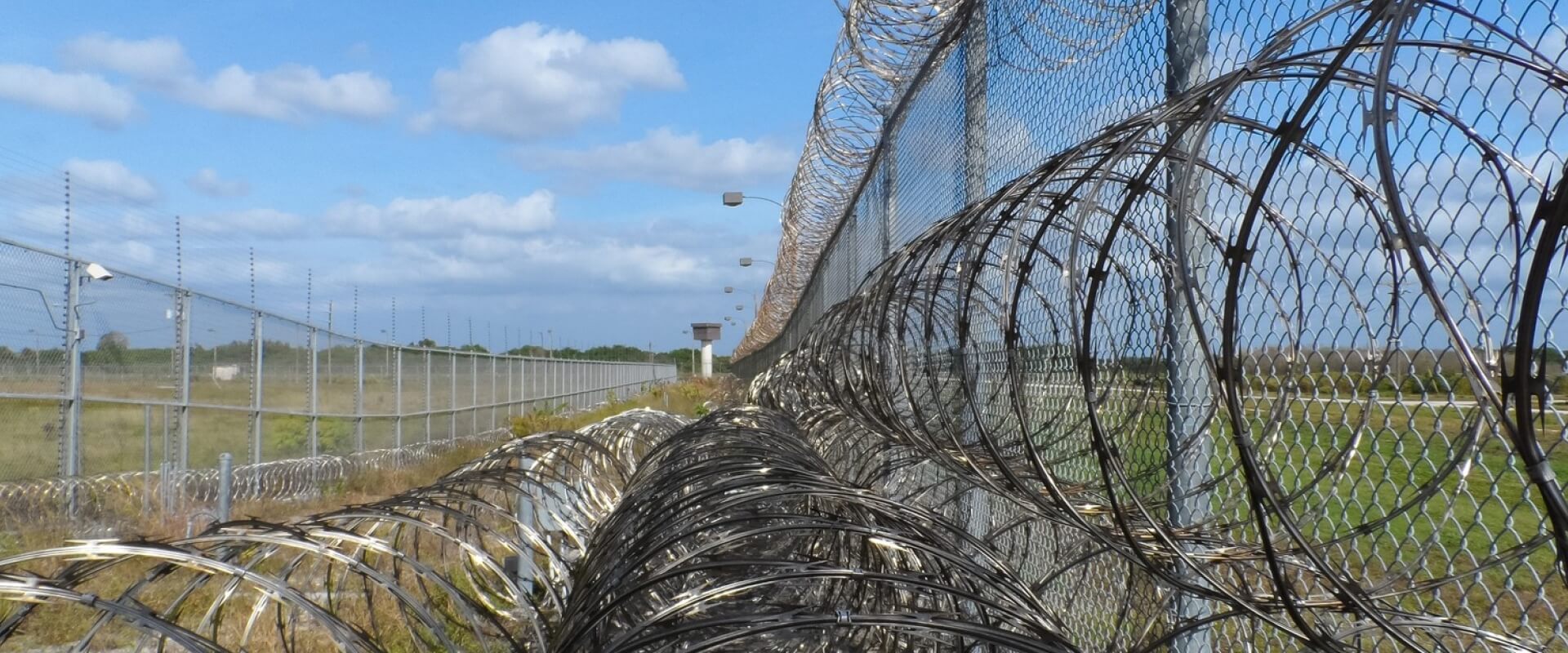State and Private Violence
Fight for Clemency for Women in Prison for Defending Themselves Against an Abuser
by Michelle VanNatta & Margaret Byrne

court-advocacy domestic-violence
All women in prison are survivors of violence. According to an informal survey conducted at the Cook County Jail during July 2000, by The Chicago Metropolitan Battered Women’s Network, 100% of the surveyed women who were detained or incarcerated at the Cook County Jail had experienced assault or abuse at some time in their lives, 96% at the hands of a partner or spouse (Centralized Training Institute materials, 2002.) Even women who have not experienced overt violence in their lives before serving time become survivors of the violence of the prison system itself.
There are no exact data on how many of the crimes women have been convicted of somehow relate to the women’s experiences of abuse in their families, workplaces, neighborhoods, schools, or relationships. Nevertheless, it is clear that the state often incarcerates women for actions directly or indirectly relating to abuse against the woman. For example:
- When girls and young women run away from home to escape abuse and turn to theft and prostitution to support themselves.
- When a woman kills or seriously injures her batterer by using physical force to defend herself against an attack.
- When a batterer commits a crime in the presence of a woman and she is considered an accomplice. Often, women are convicted based on accountability, even though they were coerced into assisting the main perpetrator.
- When a batterer attacks or kills the survivor’s child and the survivor is considered accountable for her “failure to protect” the child.
- When a survivor begins to use illegal drugs to medicate her pain.
- When an abusive boyfriend or pimp forces a woman into prostitution.
- In many of these cases, the abuse perpetrated by the batterer against the defendant is not adequately considered at trial or sentencing.
Because of Battered Women’s Movement activism, there is a growing awareness that domestic violence is common in our society and that issues of abuse should be taken into account in criminal trials. Nevertheless, this message has been slow to filter into the court system and slower still to reach the thousands of women who are currently incarcerated because of abuse. Furthermore, there is a backlash among prosecutors, judges, jurors, and even some defense lawyers, each of whom thinks he or she knows what a “worthy” battered woman looks like. A defendant is unlikely to fit this worthy victim stereotype for many reasons, such as if she has a drug addiction, if she is a woman of color, if she is a lesbian, or if she has a prior conviction for prostitution.
There is some precedent for gaining the release of women from prison when domestic violence has not been adequately considered in a case. One strategy is to file a post-conviction type of an appeal in which the defendant shows that the defense attorney was ineffective due to failing to provide evidence of the history of abuse at trial or sentencing. Often, there are legal factors that make this approach difficult or impossible, such as the lawyer’s decisions were merely tactical ones, or the issue of his or her ineffectiveness was waived because it was not raised at an earlier time, or a deadline for filing the post-conviction petition has expired. Moreover, the prisoner is generally not provided with a free lawyer for handling a post-conviction petition.
If legal appeals and post-conviction petitions have been attempted or ruled out, many states have a clemency process. This process allows a woman in prison or her representative to file a clemency petition with the governor, asking for mercy and documenting why her sentence represents a grave injustice and she should be released from serving the rest of her sentence.
This process differs in every state. The best way to find out how to do this in your state is to find a lawyer who can investigate the process. You can also ask the governor’s office, contact a local law school, or see if your state has something like a prisoner review board or parole board. Some big law firms have a pro bono coordinator who may be interested in collaborating on a clemency project. Law students are excellent partners for clemency projects. It is helpful, although not crucial, to find a law school that is geographically close to a women’s prison. You can contact a women’s bar association or get a referral to a lawyer from a prisoners’ rights or human rights organization. Most importantly, you will want to gather allies and form coalitions with battered women’s organizations, prisoner organizations, and other progressive women’s groups.
The Illinois Story
The founding committee of the Illinois Clemency Project for Battered Women consisted of representatives of Chicago area battered women’s organizations, feminist law professors, and progressive lawyers. The lawyers had been filing individual clemency petitions on behalf of battered women in prison for several years in the late 1980s and early 1990s. The founders felt that it was a good organizing tool to file clemencies in a group as opposed to doing individual cases as a way to challenge the systematic ways women were not getting justice at trial. They hoped that they would be able to get some public interest in the issue - as well as get some women out of prison.
In 1994, the Illinois Clemency Project for Battered Women filed twelve petitions. The criteria for accepting a case were: the woman killed or injured a batterer, there was a verifiable pattern of abuse, and the judge or jury did not adequately consider the effects of the abuse. Of the twelve petitions, the governor granted four. Since then, the Project has filed 38 more petitions, and four have been granted.
We strongly emphasize here that in the United States, clemency has been granted very rarely. There have been several wonderful and highly publicized cases, such as Illinois Governor Ryan’s sentence commutation of sentence from death to life for prisoners on Death Row in 2003 and Ohio Governor Celeste’s release of twenty-five formerly battered women in 1990. These are unusual cases. Anyone embarking on a clemency project must be extremely careful not to promote false hopes among women in prison. Most people who are incarcerated dream of release and are eager to begin planning their post-prison lives. In Illinois, the governor’s office has generally granted clemency at a rate of about 1% to 2% of all cases, and it is important to emphasize to participants every step of the way that successful clemency petitions are extremely rare.
While the Illinois Clemency Project for Battered Women has lost many cases that should have been granted by the governor, the measure of success is not just the women who have been released. Although freedom for the women is the most important part of the Project’s work, other aspects of the Project have also reverberated. Radicalizing law students by showing them the realities of domestic violence and of prison life has been valuable. Some law student volunteers eventually decided to forgo corporate work and went into public interest law. Even women whose clemencies were lost contacted the Clemency Project later reporting that their experience with the law students was far better than any experience they had with their trial lawyer. Some of these women commented that they were able to speak through their clemency petitions in ways they never could in court and were able to tell the full stories of their lives.
The Project volunteers knew that they were unlikely to win the cases because of the poor odds. Therefore, they repeatedly told women that they were most likely going to lose; the focus became working hard to make the petition process itself an empowering one for the survivors. Although everyone involved experienced many painful and bitter disappointments, nevertheless many of former clients talk about saving her copy of the petition itself. They really felt they were the authors of those documents because they were very much involved in the preparation of the petition and they had a lot of input and editorial control. The lawyer and law student volunteers worked hard through every step of the project to make the women full partners and participants, to give them control of the process and bring forth their voices.



